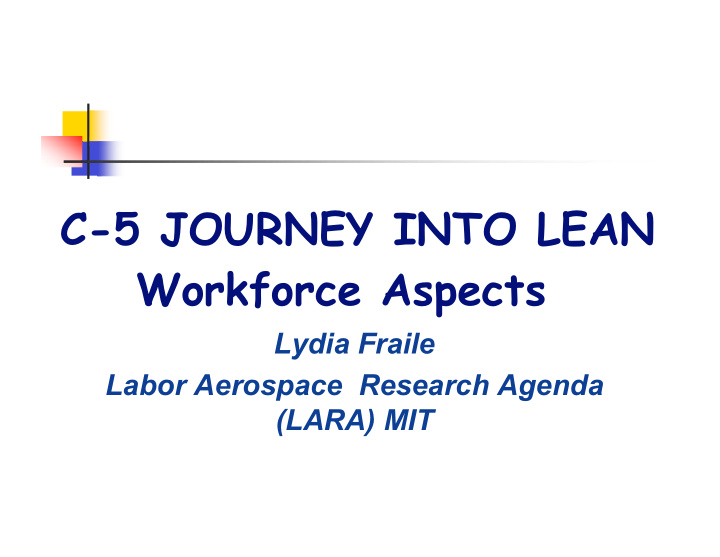



C-5 JOURNEY INTO LEAN Workforce Aspects Lydia Fraile Labor Aerospace Research Agenda (LARA) MIT
We did it!
Some C-5 Mechanics Views � Lean has put things (tools, supplies, parts) at my finger tips � We have become more efficient � Work environment has improved � Support staff (schedulers, planners, parts procurement) lagging behind � Not enough follow-up after lean events, nor requests for further input
Labor Relations Background � Main union is AFGE 9,000 workers; 2,600 members � Collective bargaining is nationwide Air Force Materiel Command (10 locals); some local bargaining � Past labor relations more adversarial than cooperative rising number of grievances and EOE complaints � Human resources and labor relations become priorities Gen. Wetekam’s 2002 and 2003 State of the Center Address
Current Climate Is improving But… � 2003 Partnership � Affected by broader agreements with union concerns over grievances down 46% privatization, BRAC, � 70% solved in mediation � federal personnel rules near all UFL complaints � reform solved internally � Diversity council and training EOE complaints down 40% �
The Role of the Union in Lean � Informal agreement � Issues raised Union rep in lean office � Work in cells leads some � Part-time union points-of- workers to lose skills � contact certification The points-of-contact � � Promotions to lean participate in lean events change positions and assess impact on work � Other examples include conditions shift and job description However, their role varies � changes from program to program
To Conclude… � Must address skills certification issue � Lean training would make union points-of-contact more effective partners � More training and opportunities for continued input from workers would help sustain lean
Recommend
More recommend